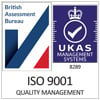Whether you work for an agency or as part of an in-house recruitment team, automation probably plays some role in your daily work, and you may well have experienced some of the benefits it can bring. We regularly hear from recruitment agencies and in-house teams that automation solutions are key to easing workloads and freeing up time to give you more time to spend on the human element of recruitment - engaging with candidates and clients.
The efficiency and productivity benefits automation brings are well documented, but these aren't its only advantages. Using automation in the right places can also significantly improve other issues such as candidate experience and reduce the impact of unconscious bias in the recruitment process.
How automation helps streamline hiring workflows
Even if you're using some automation in your day-to-day work, you're probably still spending too much time on manual tasks. Research suggests that hiring managers spend 8 hours a week on manual tasks, a staggering 20% of a standard 40-hour workweek.
If you're looking to reduce the amount of time you spend on administrative tasks, the first step is to pinpoint those tasks or processes that are taking up too much of your time. These tasks could range from loading candidate data into your CRM and posting new job ads to engaging and scheduling interviews with candidates.
For example, if you manage a team of recruiters and your recruiters are spending too much time corresponding with candidates, you could look at introducing candidate engagement software to automate some of the tasks and workflows involved in candidate communication, such as sending outreach emails and text messages to candidates or scheduling and arranging interviews. In our eBook The Power in Automation: Why good data is key to maximising revenue from your recruitment technology, we highlight research by candidate engagement platform Sense that details how their software helped a staffing agency increase recruiter productivity by more than 30% by automating some of their candidate engagement workflows.
Another common administrative task that eats up recruiters’ time is manually loading candidate data into their CRM. Back in 2017, a DaXtra client, Frank Recruitment Group, was about to implement their new Salesforce CRM and their consultants were dealing with a huge volume of manual work. They were receiving candidate documents from multiple locations, and their consultants had to add candidate CVs manually into their CRM. To combat this issue, they decided to use DaXtra Capture to automate the processing of the millions of CVs they receive each year. The introduction of DaXtra Capture dramatically cut the amount of time Frank Recruitment Group spent on administrative tasks and enabled them to reduce the time it takes to process CVs and add them to their database by 90%.
While the tasks or workflows you want to automate may vary from the examples above, the point remains the same. Automating administrative tasks and processes that are eating up your time can streamline your workflows and give you more time to spend on higher-value tasks.
How automation improves candidate experience
Alongside benefiting recruiters, automation can also positively impact the experience candidates have with your business. If you want to improve candidate experience, you should take some time to audit your whole recruitment process to see what issues could be negatively affecting candidate experience.
A problem in one area, even an issue that doesn't directly involve candidates, can easily negatively impact candidate experience. For example, if you're a recruiter and you spend too much time manually uploading CVs to your database, you'll have less time to be proactive in your communication with candidates. Or, if the recruitment database you're using is full of inaccurate data, you run the risk of marketing inappropriate content to candidates, such as sending them job descriptions that are unrelated to their professional skills and experience.
Once again, the right automation tools can help solve these issues. A solution such as DaXtra Capture ensures that every CV you receive is accurately loaded into your database. DaXtra Capture runs a thorough deduplication process to check if the candidate already exists in your database. If it’s a new candidate, their data will be loaded into the database and a new candidate profile created. If an existing candidate record is found, DaXtra Capture checks all the existing fields in the record and updates relevant fields with new or updated information. DaXtra Capture can then check the source the candidate has come from and even skill code the candidate to your database automatically. This process ensures your business has a talent pool full of clean candidate data and enables you and your recruiters to effectively and proactively contact passive and active candidates with relevant content and jobs.
Improving candidate experience should be a key focus for any business that is hiring. After all, 80-90% of candidates say that a positive or negative experience can change their minds about a role at a company.
How automation can reduce unconscious bias
Recruitment automation has a further ethical application when it is used to counteract unconscious human bias in order to promote a level playing field for job seekers. Unconscious bias can be defined as the “unconscious forms of discrimination and stereotyping based on race, gender, sexuality, ethnicity, ability and age.”
It can take different forms, including:
- perception bias: basing an opinion about a person on a set of stereotypes and assumptions
- confirmation bias: looking to confirm pre-existing ideas about a person
- affinity bias: preferring a person with similar qualities
- halo effect: thinking everything is good about a person because they are amiable
- conformity bias or groupthink: adapting behaviors to feel part of the group
Trying to combat bias is challenging. After all, it can affect every stage of the recruitment process and can be hard to measure precisely because it happens unconsciously. However, there are solutions available that can help reduce its impact. For example, our CV formatting tool DaXtra Styler gives you the capability to format and anonymise your candidates’ CVs before they get sent to a hiring manager. DaXtra Styler strips away identifiable characteristics from a CV that aren't relevant to the job they're applying for or the experiences needed. This allows the hiring manager to evaluate candidates on their skills and experience rather than factors that can lead to biased decisions.
Removing name, education, dates, personal interests and affiliations along with criteria that may identify a candidate's ethnic background or gender, make blind hiring possible. While this process doesn’t completely remove the possibility of bias in your hiring process, it does go some way to limiting its impact.
For more information on how technology can help you eliminate bias in your recruitment process, check out our eBook Playing Fair: Unconscious Bias in Recruitment.
Conclusion
As a recruitment professional, you shouldn't fear automation. Instead, spend time regularly auditing your processes to see what tasks take up too much of your time. Then determine if there is an automation solution that could help your workflow run more efficiently.
You can carry a similar process if you need to improve candidate experience or reduce unconscious bias in your hiring processes. If you want to improve candidate experience, spend some time auditing your processes to see which tasks could be affecting it. For example, similar to the scenario we mentioned earlier, an audit might uncover that you or your team are taking too long to get back to candidates. If this is the case, then you can begin the process of determining whether an automated solution, such as a candidate engagement platform, could reduce the time it's taking you to respond to candidates.
Or, if an audit uncovers potential bias in your hiring processes, then consider looking into an automated solution such as a CV formatting tool to help ensure that your candidates are being judged on their professional skills and experience.
To find out more about the evolution of recruitment automation and to see how it can streamline your workflows, download our latest eBook: The Power in Automation.



